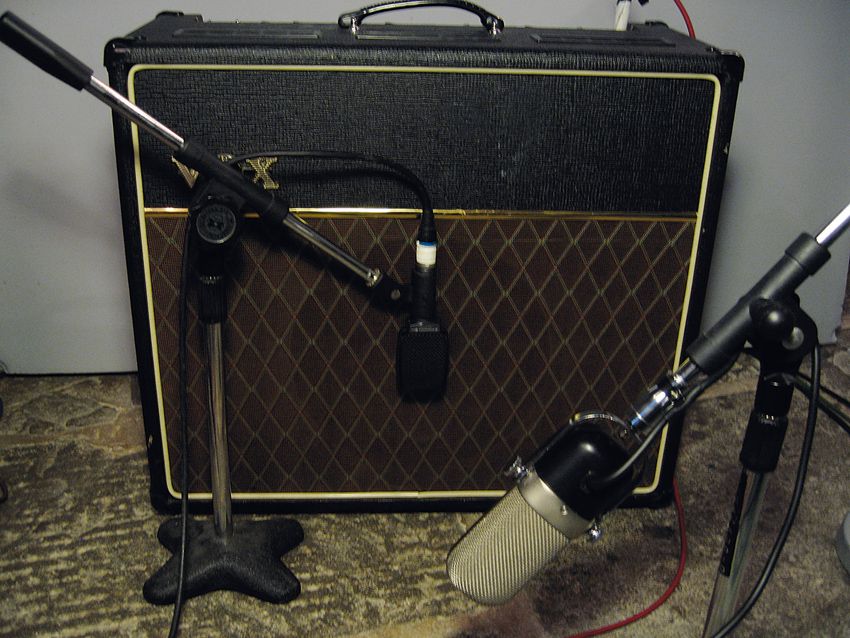Have you ever given any thought to using guitar pedals for vocals? Although guitar pedals were not designed or intended for vocals, times have changed and technology has opened up some new and amazing doors for us. Just imagine the interesting and creative effects you could give your vocals if you sang through a vintage Small Stone and/or Electric Mistress. The possibilities would be almost endless and to top it off, you would have your own unique vocal sound – one that was all your own! If the thought has crossed your mind, then I encourage you to read on, because I’m going to tell you how to not only use guitar pedals for vocals, but I’m going to tell you how to do it properly so that you’ll get the most out of them.
First, you’ll need a mic. You can use any mic, so I would start with one that you are already using. But for the sake of this blog post, let’s choose an old standard mic like a Shure SM58. (Hey. If it’s good for Roger Daltrey – and he’s been using it live with The Who for over 50 years – then it’s good enough for us.)
The output signal from a mic is rather weak, so we’ll need to boost it. For that, we need to use a mic preamp. I’m not going to get into all the details of mic preamps and how they work – we’ll save that for another blog post. For now, any mic preamp that you have will do.
Now that we have a mic and a mic preamp, we need to get them into a guitar effects pedal. The input impedance and connections on most guitar pedals cannot accept a Low-Z signal and connection coming from the mic preamp output. So we need to come up with a way to connect the pedal to the mic preamp. It just so happens that I have the solution: the Analog Alien EPi (Effects Pedal Interface)
The EPi is designed so that you can use guitar pedals directly with your pro gear in both studio and live situations. The EPi will also allow you to take your guitar pedals and record with them directly to your DAW or to any recording medium you choose. There are so many uses for the EPi that it would go beyond the scope of this blog post to describe them all in detail. We’ll save that for another time. For now, let’s take a look at how you can use the EPi to send your vocals through your guitar effects pedals.
First, plug your mic into the mic preamp. Then take the Low-Z output from the preamp and plug it into the main XLR input of the EPi. The EPi has two insertion points – they are labeled “A” & “B”. You can use them independently from each other or have both on at the same time. For now, we’ll use just the “A” insertion.
Plug the send of insertion “A” into the input of your guitar pedal. Then take the output from your guitar pedal and plug it into the return of insertion “A”. You have now just inserted your guitar pedal into your vocal signal chain. The EPi will take the signal coming from your mic and route it into any guitar effects pedal you choose. It will also automatically adjust the impedance and voltages going to and from the pedal. This will allow the pedal to interface properly with whatever device you are sending its output signal to. The EPi has 3 outputs and they are as follows:
Balanced +4 dBu XLR Output
Buffered 1/4″ Guitar Output
Buffered -10 dBu RCA Output
All 3 outputs can be used at the same time, so you can send the output from the EPi to 3 different locations simultaneously. If you want to send your vocals to the input of a mixing console, use the +4 dBu XLR output. If you want to send your vocals to your guitar amp, use the 1/4″ buffered guitar output. And if you want to send it to any gear that accepts a -10 dBu signal, you would use the RCA output. It’s that easy. But what is really important here is that you are sending the guitar pedal’s signal with the proper impedance and voltage. This will allow it to interface properly with whatever device you are sending it to in your signal chain.
Another option you have is to use insertion “B” on the EPi to insert another pedal. The insertion points are parallel to each other. This means that their inputs are fed independently from each other, so each pedal is seeing the direct signal coming from the mic preamp.
With this setup, you can use the “A” & “B” insertions to switch between the two pedals. You can have one pedal on at a time or both pedals together using the “Both” switch on the EPi. You can even hook up several pedals and daisy chain them! As I mentioned at the beginning of this blog post, the possibilities are almost unlimited. The only limitation you’ll have is the one you give yourself. So let your creativity run wild!

Good luck and feel free to email me with any questions you may have about the EPi and its uses. For more information about the EPi and other Analog Alien pedals, please visit our website: www.analogalien.com.
Good luck and remember….SOUND DIFFERENT!

